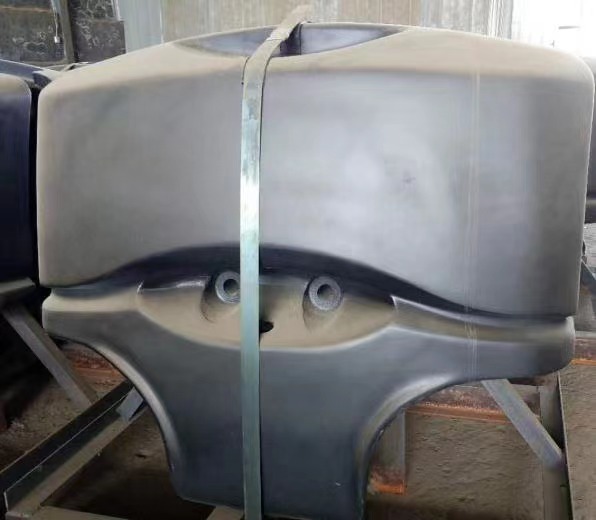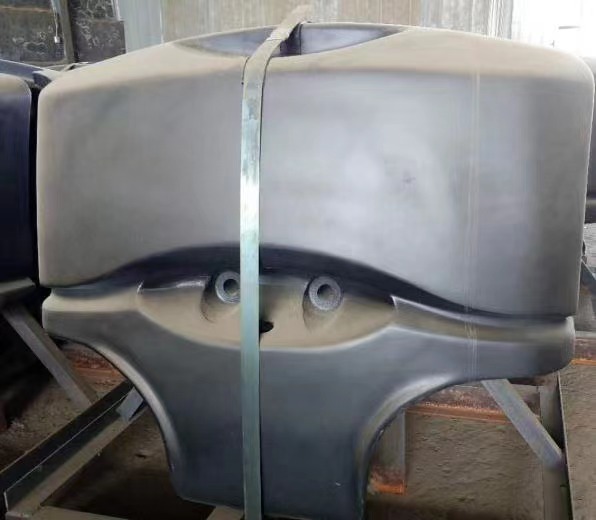






Cuireann Mingda seirbhísí deilithe beachtais ar fáil ó na meaisíní deilithe CNC is déanaí.
Le breis agus 10 mbliana de thaithí i seirbhísí meaisínithe beachtais saincheaptha, táimid tiomanta do tháirgí ardchaighdeáin a sholáthar ar phraghsanna iomaíocha.
Is féidir linn páirteanna meaisínithe cruinneas CNC, páirteanna casadh CNC, páirteanna muilleoireachta CNC, meilt dromchla, greanadh CNC etc. a sholáthar.
Is féidir páirteanna a tháirgeadh ó 1mm go 300mm in alúmanam, cruach chóimhiotail, cruach dhosmálta, práis agus plaisteach (níolón, PMMA, teflon etc.).
Agus is féidir linn an obair phróiseála tánaisteach agus fo-thionóil a dhéanamh duit nuair a bheidh fréamhshamhlú nó táirgeadh CNC críochnaithe.
Cast iron is an iron-carbon alloy with a carbon content greater than 2.11% (generally 2.5 ~ 4%).It is a multi-element alloy with iron, carbon and silicon as the main component elements and contains more manganese, sulfur, phosphorus and other impurities than carbon steel.Sometimes in order to improve the mechanical properties of cast iron or physical, chemical properties, but also add a certain amount of alloy elements, alloy cast iron.
Níos mó ná 10 mbliana de thaithí ar dhearadh agus ar tháirgeadh gach cineál páirteanna meaisínithe beachtais.
Páirteanna miotail meaisínithe beachtais CNC do chustaiméirí thar lear agus sa bhaile.
Speisialaithe i ndéantúsaíocht táirgí agus comhpháirteanna a bhfuil lamháltais dhian agus cruthanna casta acu.
Réitigh gainimh iarainn insínte OEM, réitigh cúr caillte, Múnlú Folúis agus mar sin de, roghnófar an cheird mhúnlaithe de réir an iarratais lamháltais iarbhír agus an chainníocht éilimh. Úsáidtear an chuid is mó dár réitigh tháirgthe le haghaidh comhlaí, hiodrant, caidéil, trucailí, iarnróid agus traenach agus mar sin de.
As early as the sixth century BC age period, China has begun to use cast iron, than European countries nearly two thousand years earlier.Cast iron is still one of the most important materials in industrial production.
oneAccording to the form of carbon present in cast iron, cast iron can be divided into
1.White cast iron except for a few soluble in ferrite, the rest of the carbon in the form of cementite exists in cast iron, its fracture is silver-white, so called white cast iron.White cast iron is mainly used as raw material for steelmaking and blank for producing malleable cast iron.
2.Gray cast iron carbon all or most of the flake graphite exists in the cast iron, its fracture is dark gray, so called gray cast iron.
3.Part of the carbon of hemp cast iron exists in the form of graphite, which is similar to gray cast iron.The other part is in the form of free cementite similar to white cast iron.The black and white pitting in the fracture, so called hemp cast iron.This type of cast iron also has greater hardness and brittleness, so it is rarely used in the industry.
twoAccording to the different graphite morphology in cast iron, cast iron can be divided into
1.The graphite in gray cast iron is flake.
2.The graphite in malleable cast iron is flocculent.It is obtained from certain white cast iron after annealing at high temperature for a long time.Its mechanical properties (especially toughness and plasticity) are higher than gray cast iron, so it is commonly called malleable cast iron.
3.The graphite in nodular cast iron is spherical.It is obtained by spheroidizing treatment before pouring molten iron.This kind of cast iron not only has higher mechanical properties than gray cast iron and malleable cast iron, but also has a simpler production process than malleable cast iron. Moreover, its mechanical properties can be further improved through heat treatment, so it is increasingly widely used in production.
Cast iron is an alloy consisting mainly of iron, carbon, and silicon.
In these alloys, the carbon content exceeds the amount that can be retained in austenite solid solution at eutectic temperature.
Cast iron is an iron-carbon alloy with a carbon content greater than 2.11% (generally 2.5 ~ 4%).It is a multi-element alloy with iron, carbon and silicon as the main component elements and contains more manganese, sulfur, phosphorus and other impurities than carbon steel.Sometimes in order to improve the mechanical properties of cast iron or physical, chemical properties, but also add a certain amount of alloy elements, alloy cast iron.
As early as the sixth century BC age period, China has begun to use cast iron, than European countries nearly two thousand years earlier.Cast iron is still one of the most important materials in industrial production.
oneAccording to the form of carbon present in cast iron, cast iron can be divided into
1.White cast iron except for a few soluble in ferrite, the rest of the carbon in the form of cementite exists in cast iron, its fracture is silver-white, so called white cast iron.White cast iron is mainly used as raw material for steelmaking and blank for producing malleable cast iron.
2.Gray cast iron carbon all or most of the flake graphite exists in the cast iron, its fracture is dark gray, so called gray cast iron.
3.Part of the carbon of hemp cast iron exists in the form of graphite, which is similar to gray cast iron.The other part is in the form of free cementite similar to white cast iron.The black and white pitting in the fracture, so called hemp cast iron.This type of cast iron also has greater hardness and brittleness, so it is rarely used in the industry.
twoAccording to the different graphite morphology in cast iron, cast iron can be divided into
1.The graphite in gray cast iron is flake.
2.The graphite in malleable cast iron is flocculent.It is obtained from certain white cast iron after annealing at high temperature for a long time.Its mechanical properties (especially toughness and plasticity) are higher than gray cast iron, so it is commonly called malleable cast iron.
3.The graphite in nodular cast iron is spherical.It is obtained by spheroidizing treatment before pouring molten iron.This kind of cast iron not only has higher mechanical properties than gray cast iron and malleable cast iron, but also has a simpler production process than malleable cast iron. Moreover, its mechanical properties can be further improved through heat treatment, so it is increasingly widely used in production.

réamhrá cuideachta:
Is cuideachta trádála í Hebei Mingda International Trading Company atá speisialaithe i réitigh, gaibhneachta agus páirteanna innealra.
Áirítear ar ár dtáirgí gach cineál teilgin amh le déanamh as iarann insínte, iarann liath, práis, cruach dhosmálta agus alúmanam,
teilgin meaisínithe agus páirteanna brionnaithe. Chun na páirteanna seo a dhéanamh de réir líníochtaí na gcustaiméirí,
Tá ceardaíocht agus trealamh táirgthe oiriúnach againn, amhail gaineamh roisín, múnla gainimh, boscaí croí te, céir chaillte, cúr caillte agus mar sin de.
Go háirithe i gcás comhlachtaí hiodrant agus comhlachtaí comhlaí, tá taithí shaibhir bailithe againn ar na táirgí seo le 16 bliana anuas de tháirgeadh iarbhír,
Anois táimid bródúil as ár dtáirgí a bhfuil dromchla maith agus ábhar ardchaighdeáin acu. Cibé rud, táimid ag déanamh ár ndícheall chun caighdeán níos fearr a sholáthar dár gcustaiméirí.
réitigh trí cheird táirgthe a fheabhsú agus rialú cáilíochta níos cúramach.
Ag tnúth le freagra fabhrach a fháil uait a luaithe is féidir!